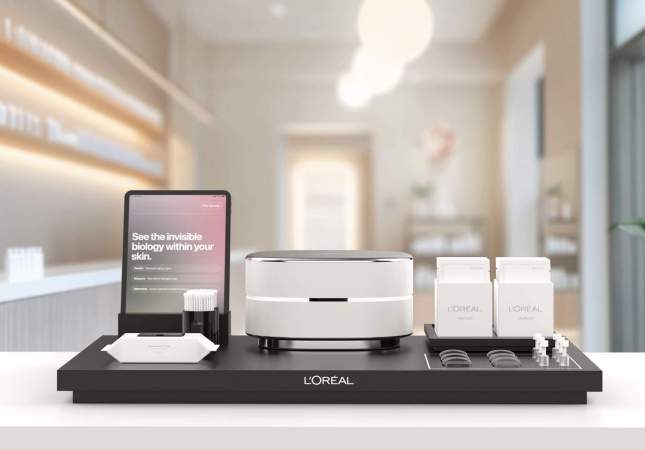L'Oréal continues to innovate in skincare diagnostics. The French multinational recently unveiled Cell BioPrint, an innovative system that has been developed in collaboration with NanoEnTek, a South Korean company.
Cell BioPrint stands out because it is able to predict possible future skin conditions with a microfluidic-based approach. This analysis is carried out using adhesive strips to collect dead skin cells. The strips are then inserted into a cartridge with a solution that separates proteins that are identified as biomarkers. The remaining liquid is analysed in a device that allows results to be obtained in a matter of minutes. The biological age of the skin is then compared with the chronological age of the user, giving a deeper insight into their current state and what may happen in the future.
The results of the analysis report on the health of the skin and provide recommendations to improve the skin's condition in terms of ingredients and products that can benefit the skin.
This device, as indicated by L'Oréal, is designed for use in a specialised, clinical or commercial environment to have the validation and insight of a skincare expert.
Barbara Lavernos, Deputy CEO in charge of Research, Innovation and Technology at L'Oréal Groupe, explained that innovation is a year-on-year objective for the company and is never lost sight of: ‘We are always looking to the future of beauty, combining cutting-edge discoveries with our expertise. With skin as the largest organ and a key to people's wellbeing, we are delighted to announce Cell BioPrint, a unique microfluidic lab-on-a-chip technology coupled with our century-long skin science leadership. With the Cell BioPrint device, we offer people the ability to discover deeper insights into their skin through targeted biomarkers and to proactively address the beauty and longevity of their skin.’
